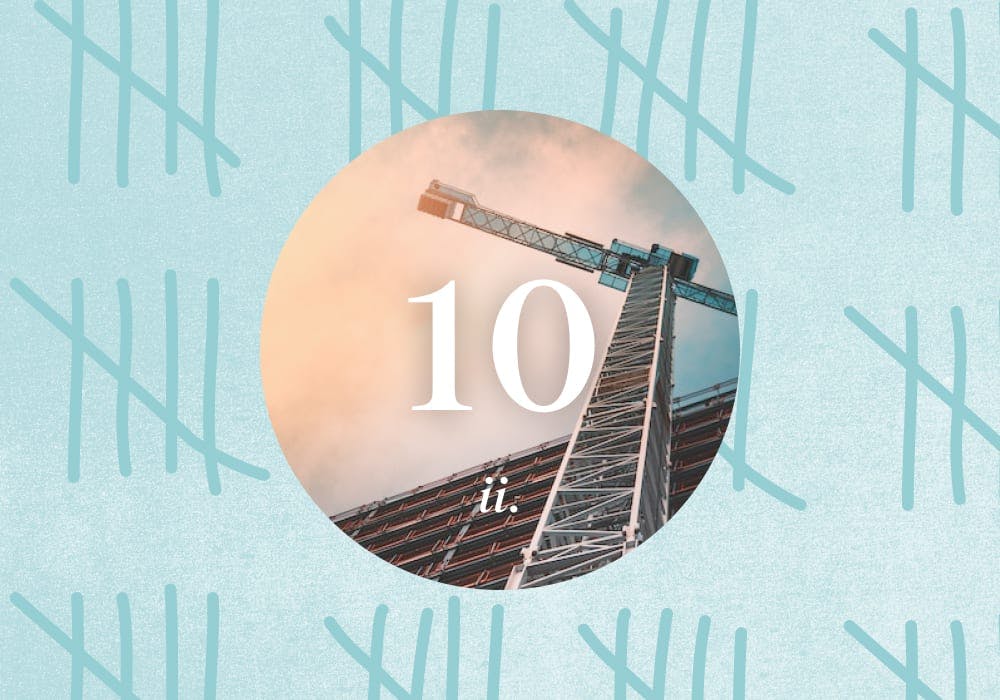Nine Things We’ve Learned From Ten Years of Crane & Rigging Marketing (Part 2)

Two weeks ago, we brought you the first four insights from our list of nine things we’ve learned from a decade of crane and rigging marketing. As promised, here are the final five, in no particular order. (Except, you know, the one I put them in.)
The most successful organizations invest heavily in technology—across the board.
Technology has infiltrated, disrupted, and in many cases, improved nearly every aspect of the construction business—and adoption is only going to increase in the years to come. Over the last decade-plus, we’ve seen the initial resistance to technology subside (think back to the early heated debates surrounding black box technology and on-board and on-hook cameras), and the most successful organizations are using technology to enhance their sales, safety, project management, workforce development, training, fleet management, risk management, and mobile workforce initiatives. Crane and rigging companies looking for growth and expansion into new markets are searching for and adopting technologies that not only improve efficiencies and make life easier, but create additional profit centers. For example, we’ve seen how technology can make it easier to understand which cranes in your fleet are underutilized, underscoring immediate opportunities to capture revenue from underperforming equipment assets.
Technology can be a differentiator, but it can be a differentiator for everyone.
The truth of technology is that, while it can create an abundance of new opportunities for you, it can create those opportunities for nearly everyone. We’ve seen that in some areas—like business development and fleet utilization—technology has leveled the playing field a bit. Bigger players with substantial market share are more vulnerable than in days passed because technology has allowed smaller players to bid and compete for work in markets they didn’t used to have access to, with tools that give them insight into decision-making and pricing data they didn’t have ten years ago. The smartest companies are assembling technology stacks that bring together a suite of solutions that give them a unique competitive advantage. (Unique because the tech stack, when coupled with the company’s core competencies and specialization, combine to form a type of proprietary business model.)
Specialization fuels growth.
One of the first things we talk to our clients about in every engagement is their positioning, by which we mean their specialization. We ask this question early in the engagement because their positioning has a significant impact on the brand strategy exercises we employ and the tactics we suggest. What we’ve noticed is that a company’s specialization—perhaps it’s wind turbines or TBMs or press installations—is ultimately what fuels sustained growth and profit. In the end, specialization allows companies to charge more because they bring a depth of experience that only a select few companies have. Understanding how to put that positioning to work through marketing is key to growth and increased visibility.
Geographical boundaries for competition are nearly obsolete.
The Internet effectively wiped out geographical boundaries around the world and democratized a lot of work, so it’s probably no surprise that we’ve seen new players in markets where we haven’t seen them before. There’s simply more competition everywhere, in every industry. However, as is always the case with increased competition, it has also created new opportunities.
Sophisticated companies are less worried about the areas they work within, and more worried about the processes by which they work. These companies are also going back to the basics and reimagining their brands from the ground up so that when new competition shows up in their backyards, their hard-earned brand equity goes to work for them.
With Boomers retiring, Gen Xers are now in leadership positions at many legacy companies. And they’re marketing to Millennials.
The changing of the guard is nearly complete, and the playbook has forever changed. The Internet has indelibly shaped and molded the way we work, live, and consume information, and crane and rigging companies looking toward the future understand the enormous opportunity this creates. For years, we’ve heard things like, “our customers don’t use the Internet” or “our customers don’t use technology,” but we’re at a point where those customers are retiring and the ones you’re dealing with now are very much using technology—in the same ways that you are.
But it’s not about stopping one thing completely and doing another instead—it’s about finding ways to seamlessly bridge the gaps between those two worlds. What part of the in-person, analogue experience can you replicate online? Which part of the online experience needs a human being? It’s not either/or, it’s both/and. And the companies that we see pulling ahead are the ones that understand this and act accordingly.
Finally, here’s one more to get you thinking.
Human-centered design is no longer an esoteric or foreign concept, even in crane and rigging.
You may not have heard of the term human-centered design, but you’re certainly aware of its effects. It’s the reason the seat in the cab of your crane is as comfortable as it is and why you can reach the controls without having to stretch too far. It’s the reason some crane cabs can tilt back 20 degrees.
Creative powerhouse IDEO defines it like this: “Human-centered design is about cultivating deep empathy with the people you’re designing with; generating ideas; building a bunch of prototypes; sharing what you’ve made together; and eventually, putting your innovative new solution out in the world.”
Crane and rigging companies that are thriving are putting human-centered design concepts to work in everything they do, whether it’s designing new compensation plans, new office space, new training programs, or new products designed to solve old problems in novel ways.
The patterns we see while working in the construction vertical are constantly changing and evolving, and we’re certain you’ve got your own thoughts. We’d love to hear from you, so drop us a line and tell us what we missed.